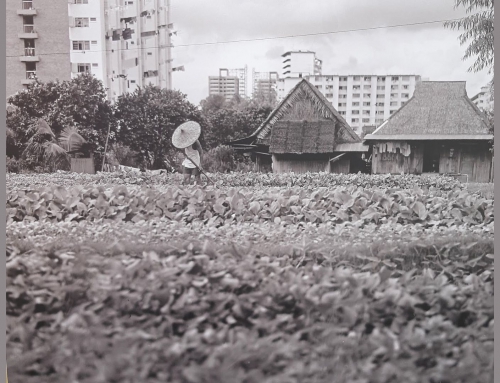新加坡图景
文 图 · 陈煜
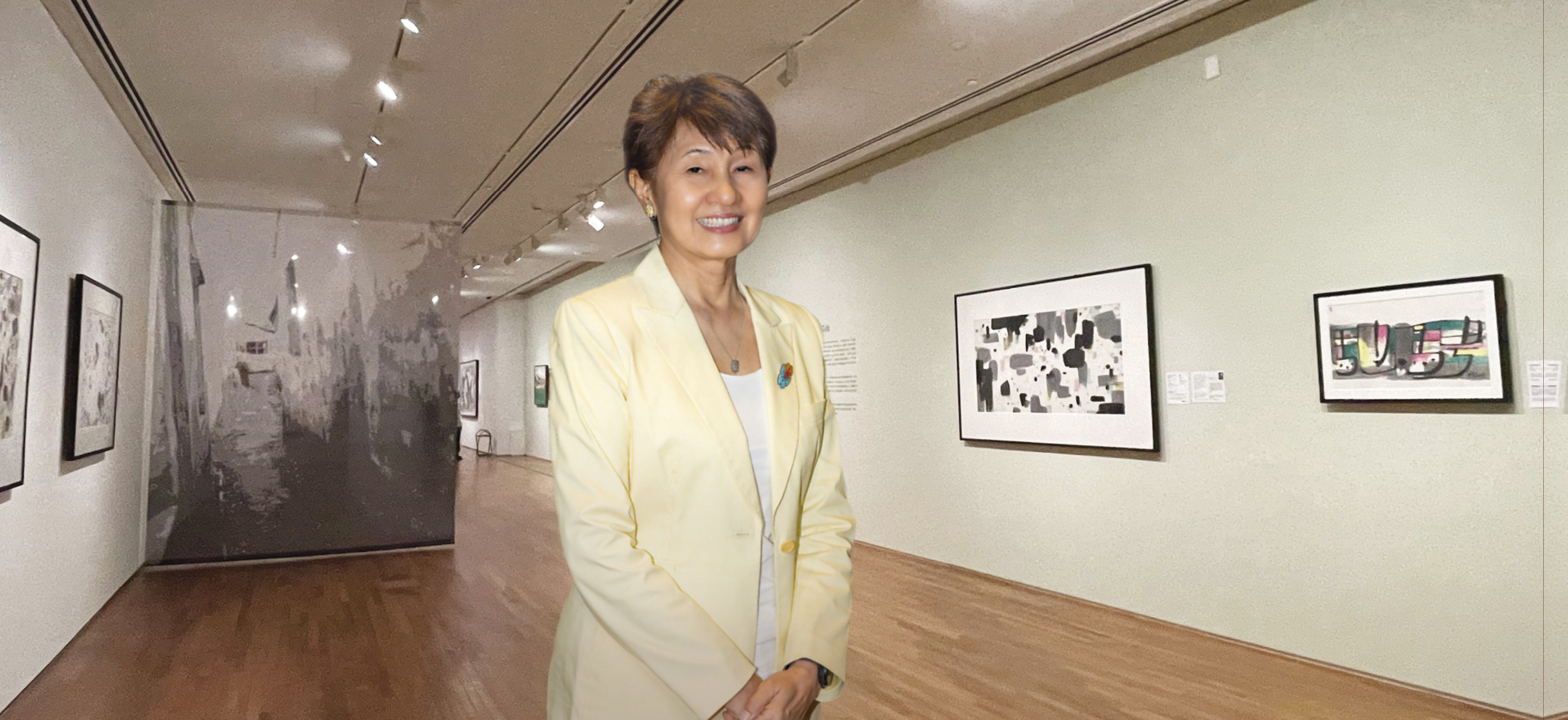
2022年8月7日专程前往客纳街72号的吾庐俱乐部听讲座,有两个吸引我的原因:其一,讲座是关于中国艺术大师吴冠中(1919-2010)与新加坡的一段渊源,新中两地的文化交流是我感兴趣的课题;其二,演讲者王丽凤是我研究的惠安先贤王水九的女儿,海外华人家庭的教育也是我所关注的。
演讲开始前播放了一段约三十分钟的纪录片,题为“吴冠中艺术——风筝不断线”,也是此次讲座的主题。这部记录片是1990年任职于新加坡广播局(现:新传媒)的王丽凤为《星期二特写》所监制编导的。影片中古稀之年的吴冠中满头白发,面容清隽,动作敏捷,在新加坡的几处地点作画,时不时对自己的落笔构图做出解释,听着宜兴口音的普通话,看着颇有年代感的影像,想象三十年前的新加坡图景。
影片播放后,丽凤登台演讲。她从这部纪录片的选题立意、背景调研、情节叙述、场地选取、拍摄剪辑等各方面介绍了整个制作过程,她在拍摄期间与吴冠中一家的交流,以及从艺术家的人生经验中获得的启发。
.jpg) 新加坡国家美术馆“吴冠中:游于艺”展 (2022年7月9日至10月30日)
新加坡国家美术馆“吴冠中:游于艺”展 (2022年7月9日至10月30日)
看着她高挑挺拔的姿态,与其父亲有几分相似的眉眼,清晰沉稳的叙述,感慨这位本地出生的第二代惠安人,因白手起家的父母创业成功,有机会于1970年代前往美国学习广播和电视制作,回国后投身于媒体行业。她能够通过华文出版物了解吴冠中的生平,为纪录片设定拍摄大纲,在艺术家停留本地的短暂时日里完成拍摄取材,剪辑完成的短片呈现出这位风格独特的中国艺术家和他眼中的新加坡。
剪辑后的影片叙述流畅,然而,拍摄的过程并非所见的那样平顺。首先需要在本地选取适当的地点,以激发艺术家的创作灵感,在该处需有可停留作画的空间。由于吴冠中是即兴作画,他对于场景的反应和现场表现是无法预料的,全程仅有一位摄影师跟拍,要及时捕捉艺术家的表情和动作并不容易。
-scaled.jpg) 吴冠中《新加坡印度庙》(1990)
吴冠中《新加坡印度庙》(1990)
丽凤特别提到拍摄时希望加入吴冠中夫人朱碧琴的身影,让故事叙述更有人情味。吴夫人一直默默站在丈夫的身后,是他画作的第一位观众,是最严格的批评家,也是他的精神支柱。在她的说服之下,吴夫人同意出现在拍摄镜头中,为世人留下难得的画面。
台下有听众询问吴冠中南来新加坡的原因,以及他的作品在本地的收藏市场。丽凤回忆道,中国改革开放后吴冠中虽然恢复创作的自由,但他融汇中国画和西洋画技法的创新风格,在中国尚未受到重视。然而,新加坡有画廊引入上百幅他的作品,原因是本地收藏家具有兼容东西方艺术的开阔眼界,能够欣赏他的创作。这座热带岛屿培育出的跨文化群体,拥抱这位曾留学法国的中国艺术大师,为他留下一部珍贵的华语纪录片,也为岛国留下引以为傲的文化记忆。
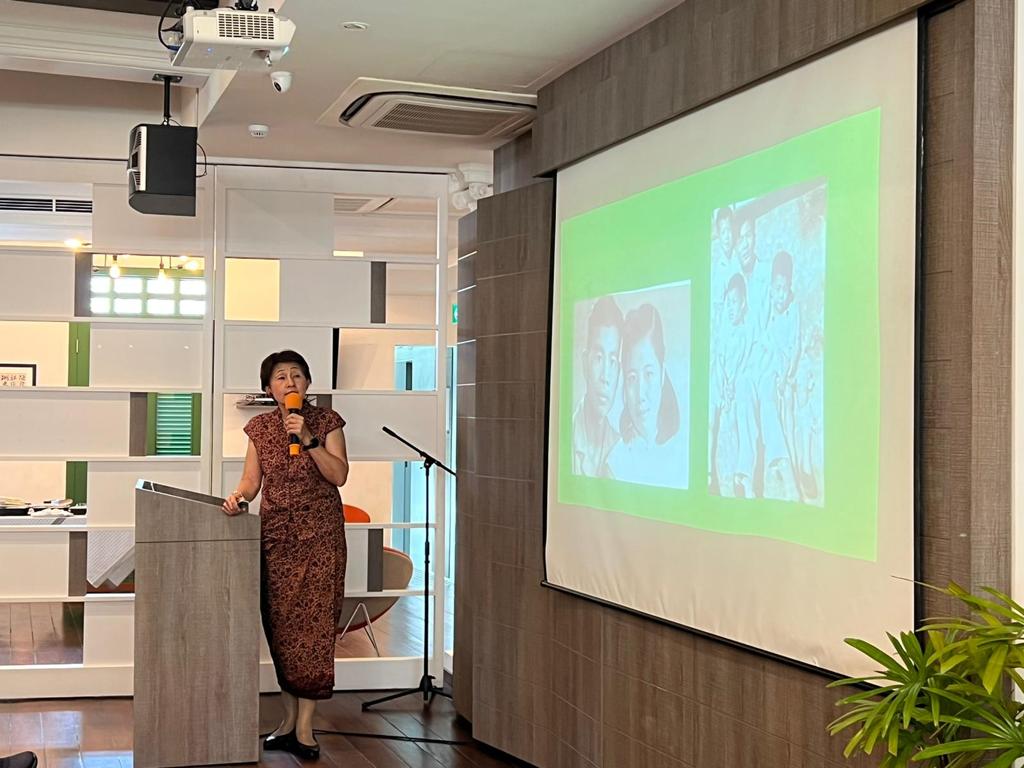 王丽凤在吾庐俱乐部进行演讲
王丽凤在吾庐俱乐部进行演讲
(作者为ON-LABO创办人兼主持人、 本刊编委。部分图片由王丽凤提供)
SINGAPORE SCENE
On 7th August 2022, I made a trip to Goh Loo Club at 72 Club Street specially for a lecture which had piqued my interest for two reasons. Firstly, the lecture was about Mr. Wu Guanzhong (1919-2010), one of China’s greatest artists, and his link with Singapore. The cultural exchanges between China and Singapore greatly intrigued me. Secondly, the speaker, Ms. Ong Lay Hong, is the daughter of Mr. Ong Chwee Kou, who was a distinguished person in Hui’an (a county in Fujian Province, China), and I had been researching about him. The education of overseas Chinese families was also my area of interest.
Before the speech began, a 30-minute documentary titled “Art of Wu Guanzhong: Unbroken String of the Kite,” which is also in line with the theme of the lecture, was played. The documentary was produced and directed by Ms. Ong, who worked for the Singapore Broadcasting Corporation (now Mediacorp), for the Tuesday Report in 1990 (Tuesday Report is a Channel 8 special series which launched on April 18, 1989 and has been airing every Tuesday). In the film, the 71-year-old Mr. Wu still looked young and handsome, nimble in his movements and actions, despite being white-haired due to age. He drew in multiple locations in Singapore. From time to time, he would explain his brushstrokes and conceptualisation of the paintings. Listening to him speak in Chinese with a hint of Yi’xing (a city in Jiangsu Province, China) accent and watching the rather nostalgic film, I imagined what Singapore was like 30 years ago.
After the documentary was played, Ms. Ong began her speech. She explained the whole production process–how she decided on the direction of the film, researched the background and how the plot was narrated, selected a filming site, filmed, edited and more. Through her interactions with Mr. Wu and his family as well as the artist’s sharing of his life experiences, she had gained much insight and inspiration in filming the documentary.
As I looked at her poised and confident posture and her face that somewhat resembled her father, listening to her speaking in her clear and calm voice, it awed me that this Singaporean woman, a second-generation descendant of immigrants from Hui’an, had the opportunity to study radio and television production abroad in the United States and return to Singapore to contribute to the local media industry-all because of her parents’ successful business which they had built from nothing. She was able to understand Mr. Wu’s life through Chinese publications before setting the frame and outline for the documentary. She was also able to complete filming all the necessary footage within the short time of Mr. Wu’s visit in Singapore and edited the documentary in a way that showcased the unique style of the Chinese artist and how he viewed Singapore.
After editing, the documentary was polished and smoothly narrated. However, the filming process was not as smooth sailing as it seemed.There were many difficulties faced. First, sourcing for an ideal shooting location in Singapore to stimulate the artist’s creative inspirations was not easy. Furthermore, the venue also needed to be a conducive space for the artist to create his art spontaneously. As Mr. Wu created art based on his surroundings, how he reacted to the surroundings would be unpredictable. Therefore, it was also not an easy feat to capture his facial expression and actions throughout his artistic process with only one cameraman.
Ms. Ong specially highlighted that she hoped to film Mr. Wu’s wife, Zhu Biqin, to make the story more heartwarming. Mrs. Wu had always supported her husband quietly by his side as his first audience, his strictest critic and his pillar of emotional support. With Ms. Ong’s persuasion, Mrs. Wu agreed to be featured in the documentary, which was a rare sight that tugged at the heartstrings.
One of the audience members asked about the reason behind Mr. Wu Guanzhong’s visit to Singapore and the local collectible market featuring his artworks. Ms. Ong shared that after China’s economic reform and opening-up, Mr. Wu was once again granted creative freedom but his innovative style of infusing Chinese art and Western painting techniques was not valued in China. Yet, in Singapore, there were art galleries that carried hundreds of his artworks. This was due to the openness of the local collectors towards both Eastern and Western art, which meant they were able to appreciate Mr. Wu’s artworks. Our country has developed a multicultural society that was able to embrace the legendary Chinese artist that once studied in France, allowing for the creation of an invaluable Chinese documentary on his legacy, which has left a profound cultural imprint on this island that we can all be proud of.
(Translated by Alden Nicholas Lok, Chin Yi Zhi (Dunman High School), Winning entry of the Chinese-English Translation Competition)


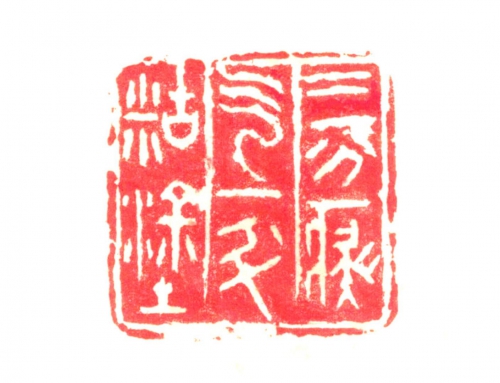
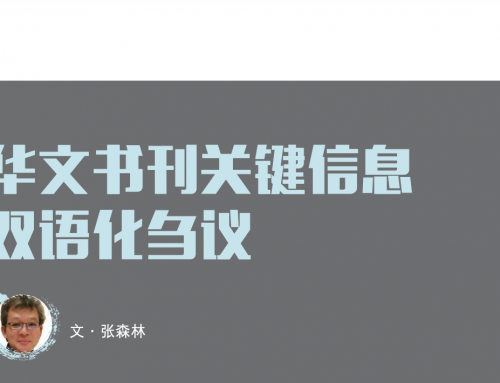
-scaled-500x383.jpg)

